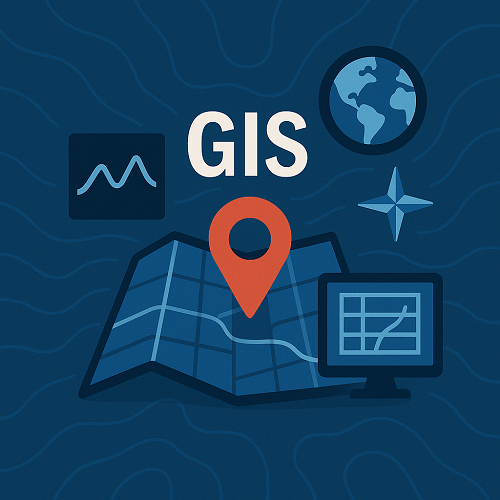TL;DR
- AI-driven geospatial analytics are enabling faster, more precise insights.
- IoT integration is fueling real-time spatial data collection and monitoring.
- Blockchain is emerging for secure, auditable geospatial recordkeeping.
- Cloud GIS remains critical for scalability and collaborative work.
- Open data and interoperability are driving greater accessibility and innovation.
What’s new right now
As of 2025, Geospatial Information Systems are rapidly integrating artificial intelligence for advanced analytics, while IoT devices expand the depth and frequency of spatial data capture. Blockchain is entering the space to ensure secure, transparent records of geospatial transactions. Leading industry observers highlight Cloud GIS as a pivotal enabler for distributed teams, while open data standards are increasingly seen as the bedrock for interoperability (source, source).
Why it matters
For businesses, these advancements mean better decision-making through rapid spatial intelligence, enhanced operational efficiency with real-time updates, and stronger trust in data integrity. Technically, AI and cloud delivery expand GIS scalability and accuracy, IoT bridges the gap between field and office, and blockchain safeguards sensitive spatial contracts and asset maps.
Deep Dive: Key GIS Innovations in 2025
AI-Powered GIS Analytics
Geospatial AI leverages machine learning to classify land cover, detect anomalies, and predict environmental change with unprecedented precision. Models trained on vast datasets can now integrate imagery from satellites, drones, and IoT sensors, dramatically reducing analysis cycles.
IoT-Driven Real-Time GIS
Networks of connected sensors stream geospatial data directly into GIS platforms. For urban mobility or environmental monitoring, these systems deliver up-to-the-minute spatial insights, replacing periodic manual surveys.
Blockchain for Geospatial Records
Blockchain in GIS ensures transaction traceability—valuable for land ownership proofs, infrastructure asset records, and disaster reconstruction documentation. Smart contracts enable automated updates with verifiable audit trails (source).
Comparison of Approaches
| Trend | Use Case | Key Benefit |
|---|---|---|
| AI in GIS | Predictive analytics for urban planning | Higher accuracy and faster outcomes |
| IoT Integration | Real-time traffic monitoring | Immediate situational awareness |
| Blockchain Records | Land registry systems | Immutable, secure documentation |
| Cloud GIS | Collaborative mapping projects | Scalable and accessible from anywhere |
Mini Case Study: Smart Flood Response
Problem: A coastal city faced recurrent flooding, but its legacy GIS relied on static maps updated manually, leading to delayed evacuation alerts.
Approach: The municipality deployed IoT sensors along waterways and integrated feeds into a cloud-based GIS dashboard enhanced with AI algorithms to predict flood spread. Blockchain was used to authenticate evacuation route updates shared with regional agencies.
Outcome: Real-time detection reduced evacuation order delays by 40%, lowering property damage claims by 25% within the first year.
Implementation Checklist
- Assess current GIS workflows and data sources.
- Select AI models suitable for your spatial analysis needs.
- Integrate IoT devices for live data capture.
- Choose a secure blockchain framework for records.
- Migrate or expand GIS to a cloud platform with collaboration tools.
- Adopt open data standards to ensure interoperability.
- Train teams in new technologies and workflow integration.
FAQs
What is Geospatial AI?
It is the application of artificial intelligence to process, interpret, and predict patterns in spatial data.
How does IoT improve GIS?
IoT enables continuous, automatic updates to GIS platforms, providing real-time insights.
Why use blockchain in GIS?
Blockchain provides secure, immutable records, ensuring data trustworthiness for sensitive spatial information.
Is Cloud GIS secure?
Yes, when implemented with robust encryption and compliance frameworks, it meets enterprise security standards.
What is interoperability in GIS?
It means different GIS systems and datasets can work together seamlessly via standard formats and protocols.
Are open data sources reliable?
Many are curated by reputable agencies, but validation is essential before critical use.
Conclusion
The convergence of AI, IoT, blockchain, and cloud GIS is reshaping spatial intelligence workflows, offering unmatched speed, accuracy, and security. As open data and interoperability gains momentum, organizations that embrace these technologies will lead in innovation and resilience. For tailored solutions, explore our GIS services today.
